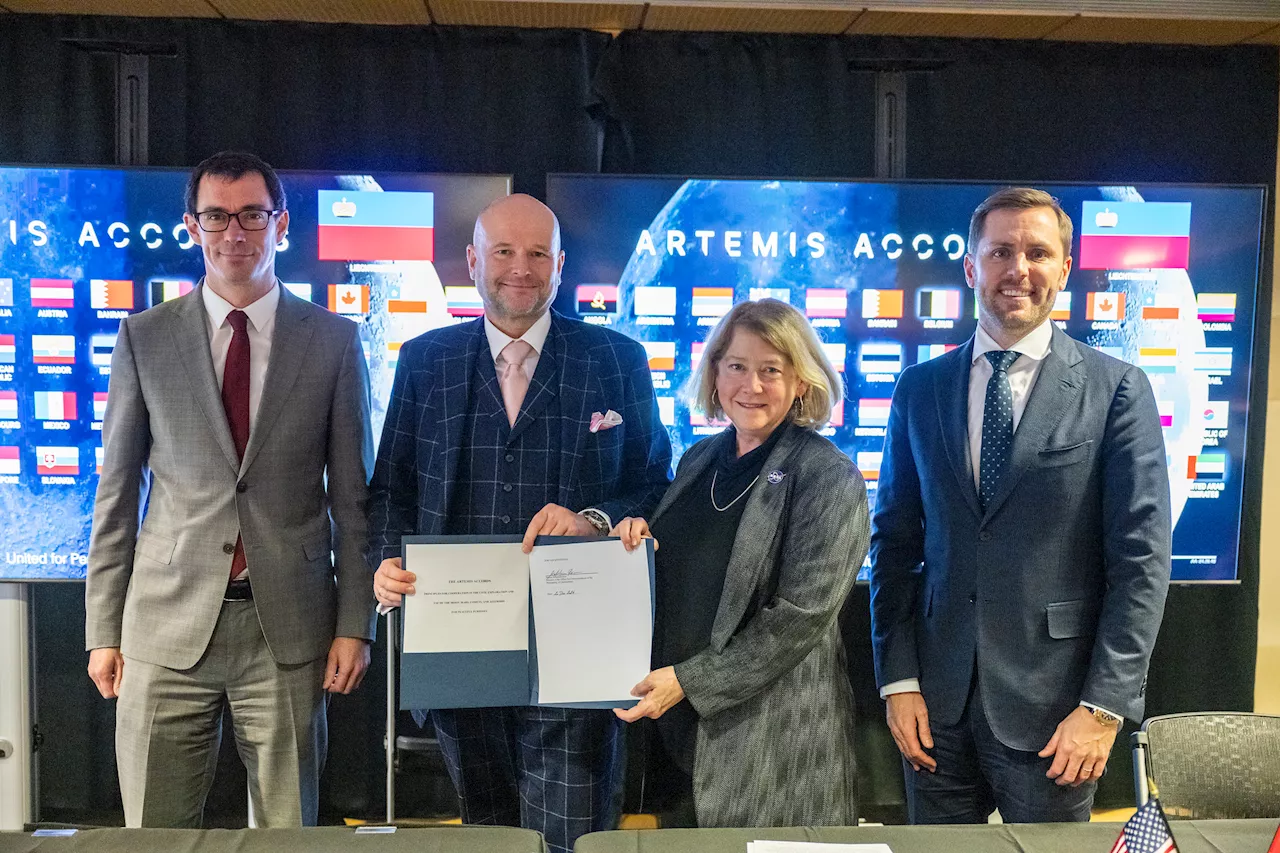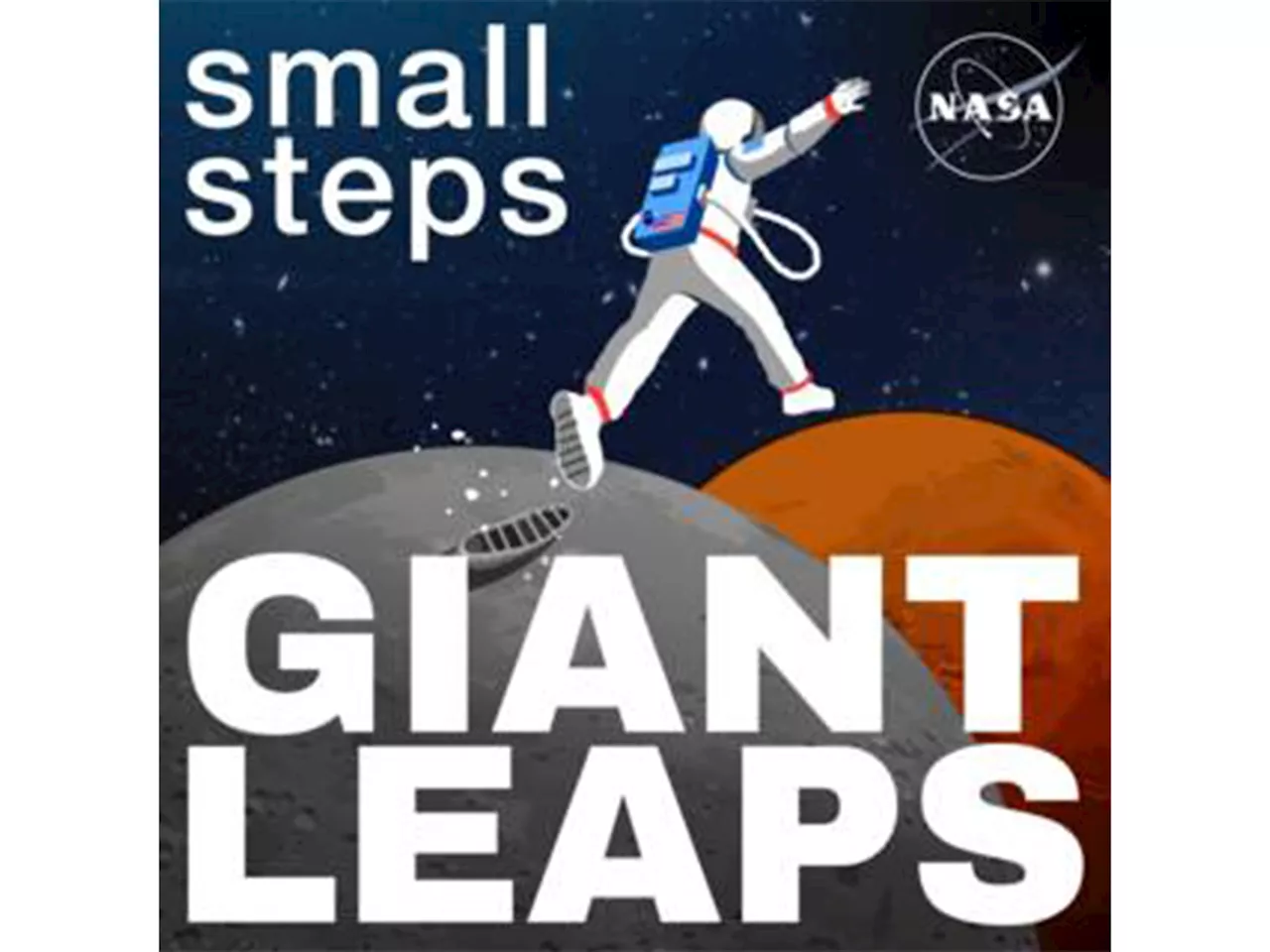In this episode of Small Steps, Giant Leaps, NASA Deputy Administrator Pam Melroy discusses her 30-year career at NASA, her contributions to human spaceflight, and her vision for the future of space exploration. Melroy reflects on the development of key strategies, such as Moon to Mars, Space Sustainability, and NASA 2040, and shares her perspectives on the future of research and development in low Earth orbit.
Welcome back to Small Steps, Giant Leaps, the podcast from NASA ’s Academy of Program/Project and Engineering Leadership. I’m your host, Andres Almeida. Each episode dives into the lessons learned and experiences of the people behind NASA ’s innovative missions and research. We’re kicking off this new year with NASA ’s deputy administrator Pam Melroy , who wraps up her 30-year tenure at NASA this month. Her distinguished career spans decades of service in space exploration and national defense.
As a former astronaut with three space shuttle flights under her belt – including one flight as commander – Pam has made lasting contributions to human spaceflight. That football field-sized International Space Station orbiting Earth? Pam helped build that. She’s also a veteran of the U.S. Air Force as a retired colonel, having logged nearly 6,000 flight hours in more than 50 different aircraft, and is a respected leader in the aerospace industry. In her most recent role, Pam helped shape NASA’s focus on long-term strategies, including Moon to Mars exploration, space sustainability, and a long-term vision for NASA’s future as an organization. Now, as she prepares to pass the torch, Pam joins us to reflect on her NASA career and share insights from her time as a pilot, astronaut, and public servant.Host: You helped design the blueprints for significant NASA exploration strategies, including Moon to Mars, Space Sustainability, the Low Earth Orbit Microgravity Strategy, and NASA 2040. Was there a common theme for developing them?Several common themes, I think, which really reflect my views on strategy development, which is to architect from the right. And so, imagine the state that you want to achieve and then start working backwards from there. But I think also it reflects my profound philosophy, which is that a well-crafted strategy is obvious, elegant in its simplicity. People are like, “Okay, that makes sense.” And those things I think, are really important because they’re simple. Everyone can understand them, and especially in an agency as large as NASA, being able to understand and get on board means you’re all rowing in the same boat together.As a space shuttle commander, you’ve seen firsthand that low Earth orbit offers unique opportunities for science and industry. With NASA planning to deorbit the space station in the future, what do you see as some of the biggest opportunities in continuing this research and development in LEO?I’m very excited, actually, about that. You know, the space station was a vision. It was a vision that, instead of running a major national lab, the space shuttle, six or seven times a year for 10 days at a time that we could do science, 24/7 in microgravity. And so that was a part of my career as an astronaut, was to help build it and to see it come to its fruition is amazing. But what we’re seeing now is we spent the first decade building it, and the second decade trying to figure out how to really optimize science and research, and now we’re starting to get amazing results. So, for me, I think it’s so clear we’re not finished yet. We have so much more to learn. But also, for me, the insight that most of the trip for any destination, anywhere other than the Moon and the solar system, is going to involve a lot of microgravity. means that we need to continue to advance the technologies that support microgravity science and keeping humans alive.Absolutely. I mean, that’s the research that we’ve done has already had a profound impact, particularly in the area of medicine. But a lot of people don’t really know that a lot of the other technologies that we’ve developed just to support astronauts living for long duration, like water reclamation, are also being used around the world.Can you share your thought process behind NASA 2040, and how you see it influencing the next generation of space exploration and technology?Yeah, that’s a great question. I think I always thought that what we were aspiring to do, which is to truly become the agency that I think everybody expected from us, Star Trek. And you know, everything else is that we would be the ones who would deploy humans throughout the solar system and figure all this out. I always knew that there would need to be thoughts about how we would prepare our workforce and the infrastructure that we have. So, I always saw it as sort of the companion to our technical pieces that we have to have the business operations and training and all those other things to support those bold aspirations. So, from that standpoint, I think we have this unique opportunity right now to think about what would advanced infrastructure, to support all these things that we will be doing in the year 2040, look like? So, we have a chance to reinvent all of our center campuses from a place that was built in the ’60s to support Apollo to a place that it was revitalized in the ’20s and the ’30s to support Artemis and Moon to Mars.
NASA Space Exploration Astronaut Pam Melroy Moon To Mars International Space Station Low Earth Orbit Space Sustainability NASA 2040
United States Latest News, United States Headlines
Similar News:You can also read news stories similar to this one that we have collected from other news sources.
 NASA Deputy Administrator Pam Melroy to Receive 2025 National Space TrophyNASA Deputy Administrator Pam Melroy, a retired U.S. Air Force colonel and former astronaut, will receive the 2025 National Space Trophy for her contributions to space exploration. Melroy has a distinguished career, including commanding a space shuttle and serving in leadership roles at various organizations. She is recognized for her exemplary leadership, dedication to mission excellence, and integral contributions to the advancement of space exploration.
NASA Deputy Administrator Pam Melroy to Receive 2025 National Space TrophyNASA Deputy Administrator Pam Melroy, a retired U.S. Air Force colonel and former astronaut, will receive the 2025 National Space Trophy for her contributions to space exploration. Melroy has a distinguished career, including commanding a space shuttle and serving in leadership roles at various organizations. She is recognized for her exemplary leadership, dedication to mission excellence, and integral contributions to the advancement of space exploration.
Read more »
 NASA Appoints Carlos Garcia-Galan as Deputy Manager for Gateway ProgramNASA has named Carlos Garcia-Galan as deputy manager for the Gateway Program, a crucial step in establishing a lunar outpost.
NASA Appoints Carlos Garcia-Galan as Deputy Manager for Gateway ProgramNASA has named Carlos Garcia-Galan as deputy manager for the Gateway Program, a crucial step in establishing a lunar outpost.
Read more »
 The Unsung Heroes of NASA: The Power of NASA AdministratorsThis article explores the crucial role of NASA administrators, often overshadowed by the fame of astronauts. It highlights their influence in shaping NASA's direction, securing funding, and collaborating with industry and international partners.
The Unsung Heroes of NASA: The Power of NASA AdministratorsThis article explores the crucial role of NASA administrators, often overshadowed by the fame of astronauts. It highlights their influence in shaping NASA's direction, securing funding, and collaborating with industry and international partners.
Read more »
 Brazoria County Sheriff: Fallen Deputy Jesus Vargas Was 'Everything You'd Want' Out of a DeputySheriff Bo Stallman speaks about the tragic loss of Deputy Jesus Vargas, who was shot and killed while serving a warrant in Houston. Vargas is remembered as a dedicated family man and exceptional deputy. The Sheriff's Office is grieving and pledges to support Vargas's family during this difficult time.
Brazoria County Sheriff: Fallen Deputy Jesus Vargas Was 'Everything You'd Want' Out of a DeputySheriff Bo Stallman speaks about the tragic loss of Deputy Jesus Vargas, who was shot and killed while serving a warrant in Houston. Vargas is remembered as a dedicated family man and exceptional deputy. The Sheriff's Office is grieving and pledges to support Vargas's family during this difficult time.
Read more »
 Liechtenstein Joins Artemis Accords, Committing to Responsible Space ExplorationLiechtenstein became the 52nd country to sign the Artemis Accords, a set of principles guiding international cooperation in space exploration. The signing ceremony, hosted by NASA Deputy Administrator Pam Melroy, emphasizes the commitment to peaceful, transparent, and sustainable space exploration for the benefit of all humanity.
Liechtenstein Joins Artemis Accords, Committing to Responsible Space ExplorationLiechtenstein became the 52nd country to sign the Artemis Accords, a set of principles guiding international cooperation in space exploration. The signing ceremony, hosted by NASA Deputy Administrator Pam Melroy, emphasizes the commitment to peaceful, transparent, and sustainable space exploration for the benefit of all humanity.
Read more »
 Holliston Town Administrator to Head Cannabis Control CommissionTravis Ahern, the town administrator of Holliston, will become the new executive director of the Cannabis Control Commission in 2025.
Holliston Town Administrator to Head Cannabis Control CommissionTravis Ahern, the town administrator of Holliston, will become the new executive director of the Cannabis Control Commission in 2025.
Read more »
